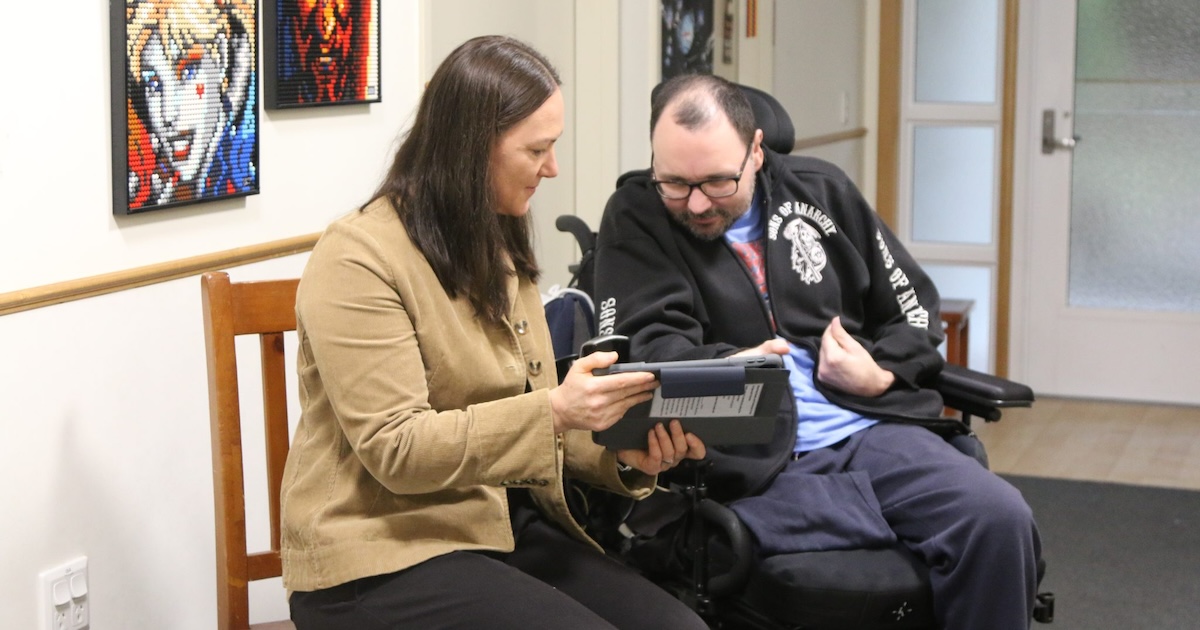In a bid to better understand the molecular mechanisms underlying cancer, several healthcare organisations have banded together to develop the use of VR in its diagnostics.
The team, composed of CSIRO Australia, the Garvan Institute of Medical Research, the Children’s Cancer Institute and Start VR, is using VR to create 3D models that visually represent what’s happening within cancerous tumours on a molecular level.
Sony Foundation and Tour de Cure have provided $240,000 in funding.
The research involves genomic sequencing (the information encoded in a cancer’s DNA), giving researchers more detailed insights into the molecular mechanisms of a particular cancer.
The project draws on Aquaria, a web-based protein visualisation tool that was jointly developed by the Garvan Institute and CSIRO. Aquaria provides details of millions of proteins and allows these models to be assembled into dynamic representations for interactive exploration.
“The Garvan Institute will be drawing on our online resource, Aquaria. Software development will be driven by Garvan’s BioVis team, in collaboration with CSIRO’s Immersive Environments Lab,” the Garvan Institute of Medical Research Project Leader Seán O’Donoghue told HITNA.
“Planning, testing and validation of the developed system will be completed with researchers from Garvan’s Cancer Division and UNSW’s Children’s Cancer Institute. Deployment of the platform for use in VR environments will be completed by Start VR.”
DERIVING OPPORTUNITIES FROM CHALLENGES
According to O’Donoghue, cancer is an extremely complex disease of the genome and requires an overwhelming amount of data sets when it comes to researching it.
“Adding to the complexity, the initial DNA mutations that first lead to a tumour undergo subsequent mutations, further altering the cancer. Recently, it has become feasible to detect these changes via DNA sequencing; this offers us unprecedented detail on a specific cancer,” he said.
“But the volume and complexity of the resulting datasets can be overwhelming. Researchers are still trying to work on how to condense this information down to the most essential. One of the main strategies involves mapping the consequences of DNA mutations onto 3D models of proteins, and this is what our current project aims to do.”
O’Donoghue said the new tool will automatically identify protein structural states related to specific DNA mutations seen in a patient’s cancer.
“In many cases, the available 3D-model data can provide insight into the molecular mechanisms causing the cancer, as well as information relevant to treatment. Our new tool will use VR and web-based technologies, with the goal of helping researchers arrive at a clear visual hypothesis that describes what they believe is going wrong in a specific cancer, and then how it could be treated,” he said.
“Our tool will also be designed to help researchers clearly communicate their visual hypotheses to colleagues, clinicians and to patients.”
[Read more: Mobile app brings specialist advice to burn victims | CSIRO lays out action plan for Australia’s digital health future]
Although it’s primarily a research tool, O’Donoghue said the platform will also be designed for use in hospital scenarios. He also mentioned that the technology will pivot the future potential of VR for cancer research.
“By combining good user experience design and graphic design, together with DNA sequencing and structural biology, VR and AR will give researchers new insight into the molecular mechanisms underlying specific cancers, thereby enabling the discovery of new treatment options. This could transform practises in oncology,” he said.
O’Donoghue added that it has the potential to be used in other areas of research.
“VR can be useful for helping researchers explore other unfamiliar territories. Very similar approaches to ours will be useful for addressing a range of problems in the life sciences,” he said.
“This includes other diseases, as well as research aimed at improving our understanding of the fundamental processes of living cells.”
